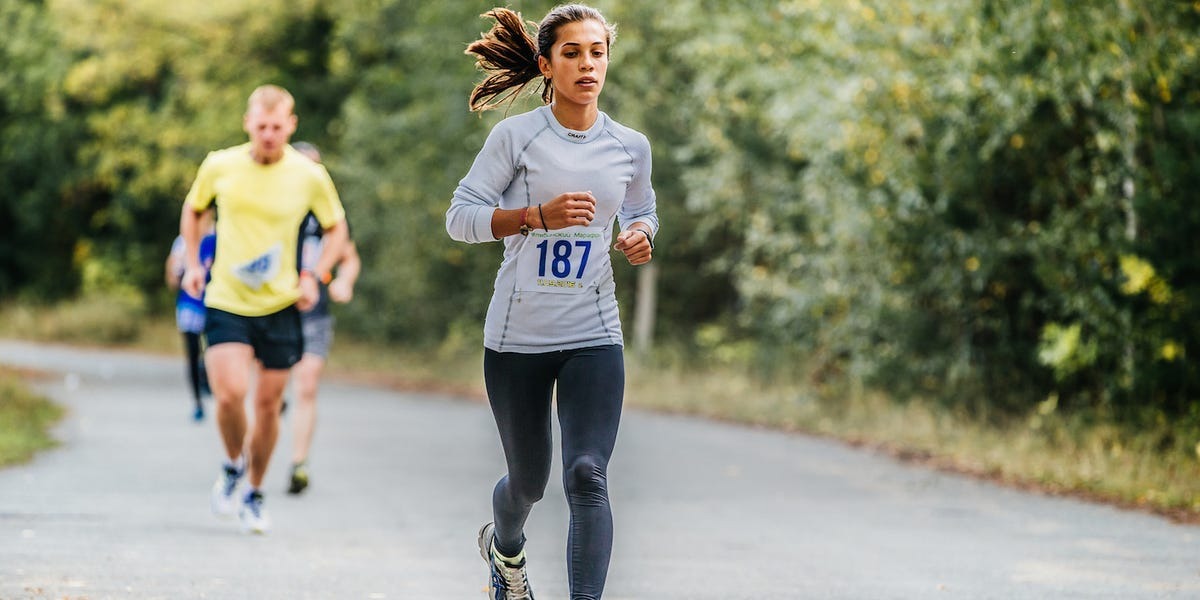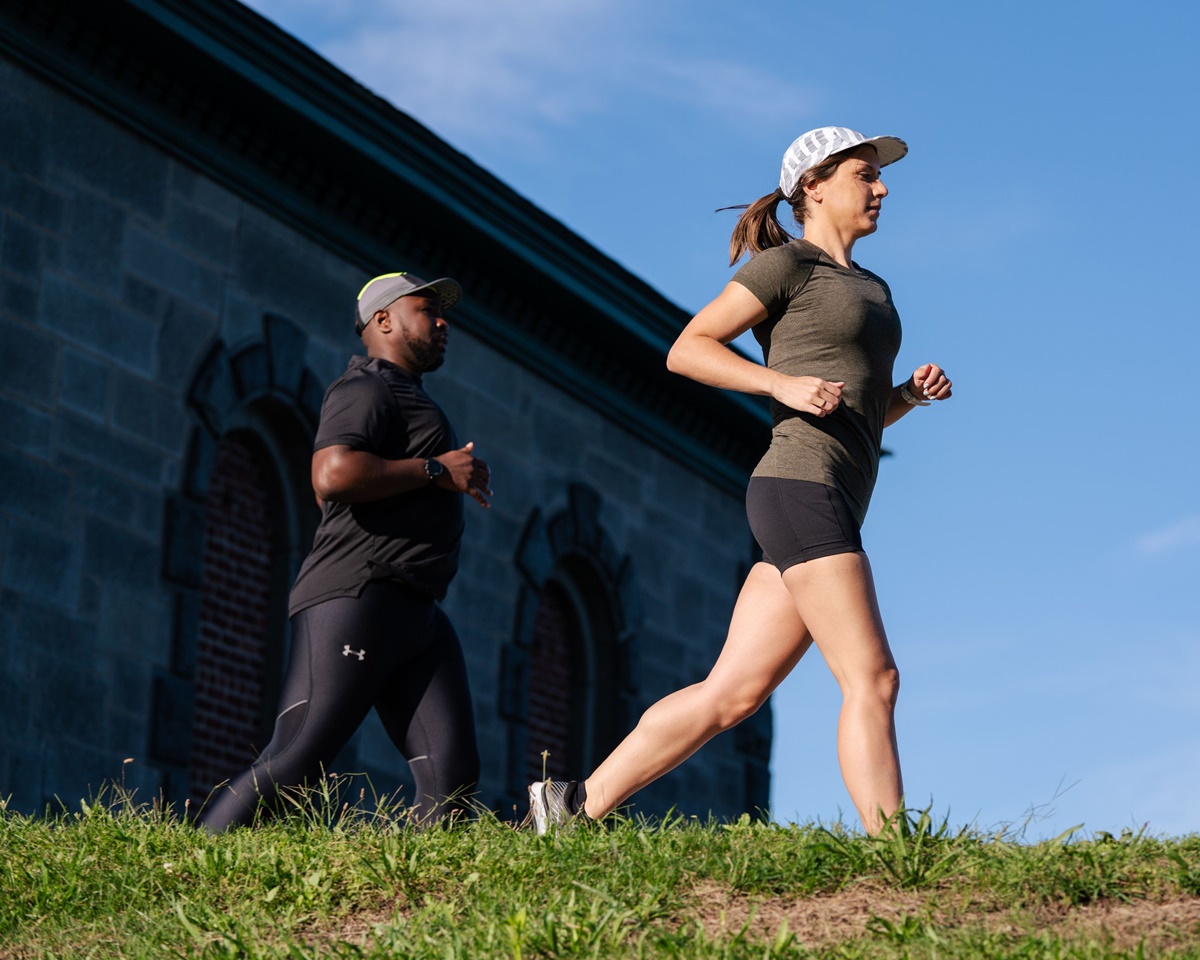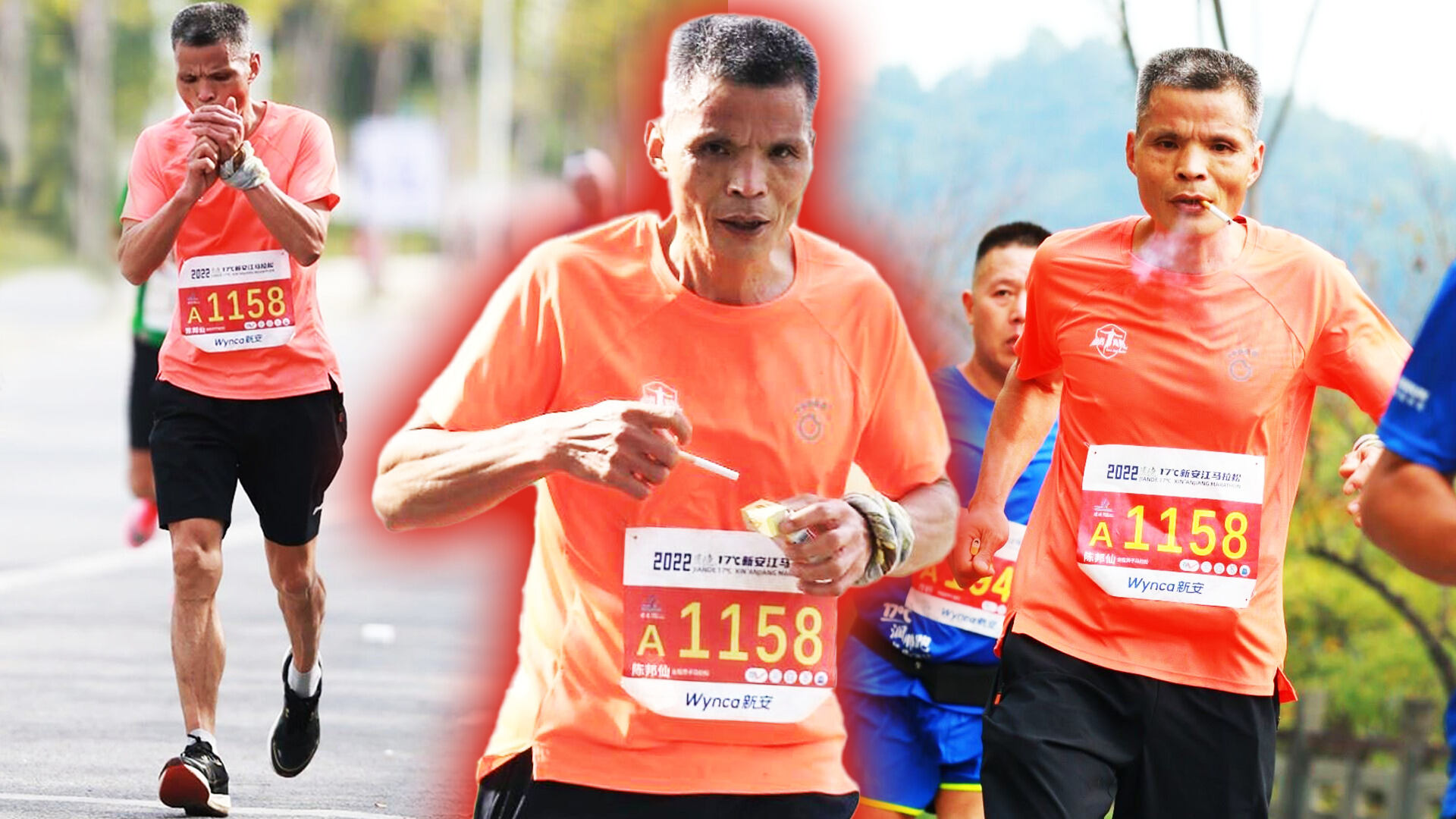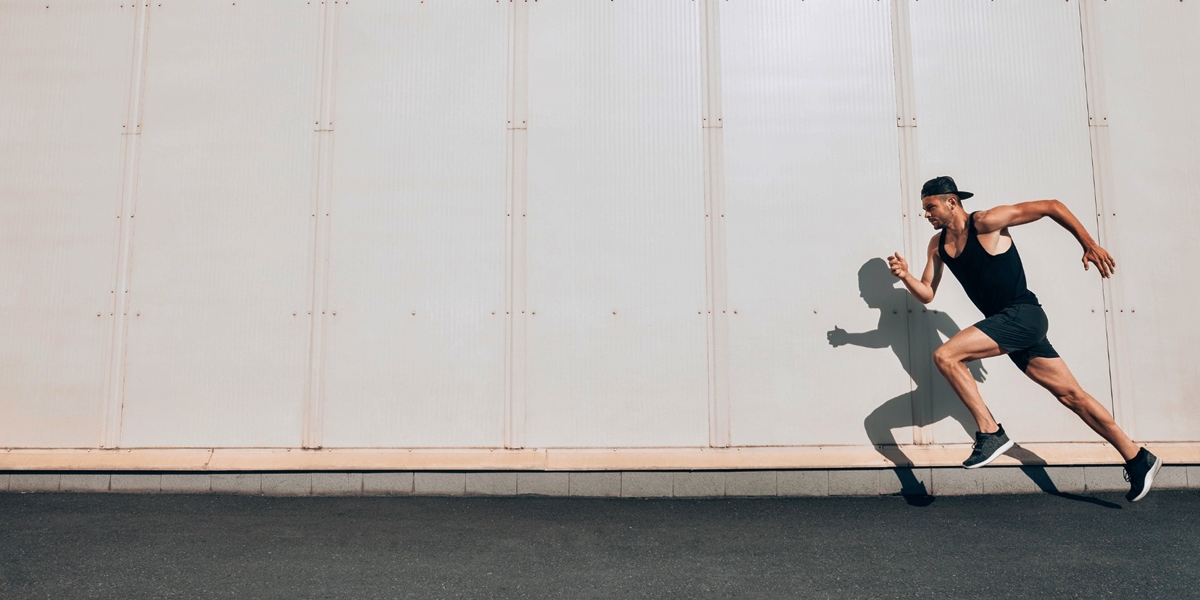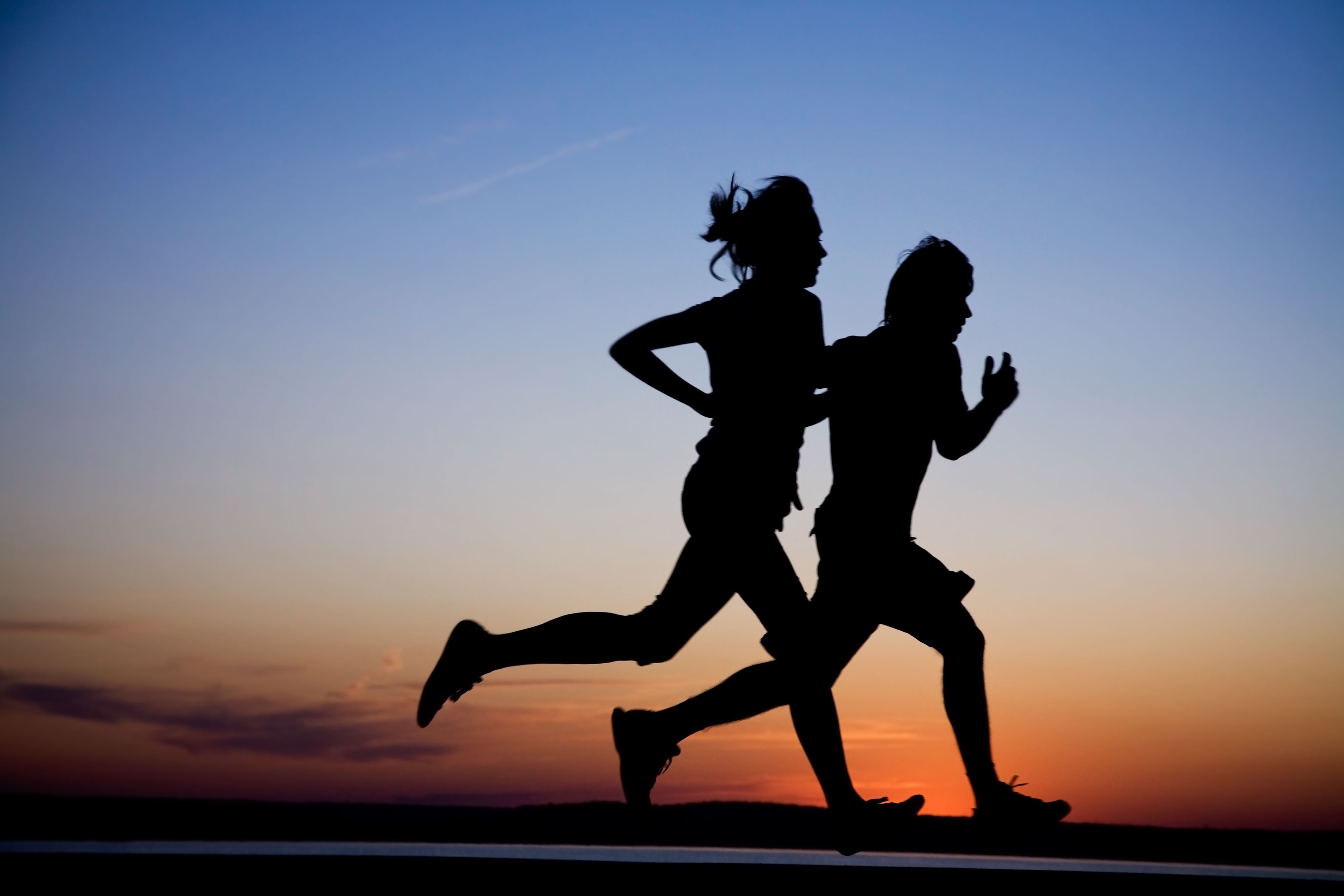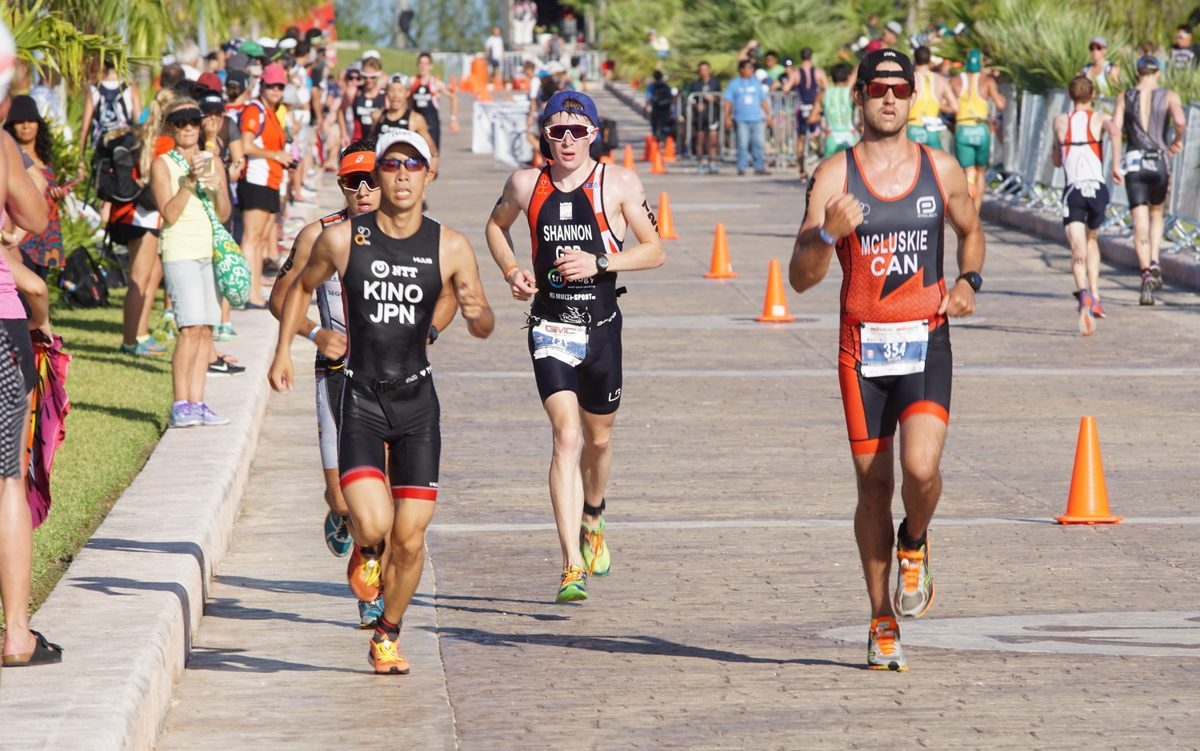Home>Misc>Featured>What Effect Does Lung Capacity Have On Athletic Performance?
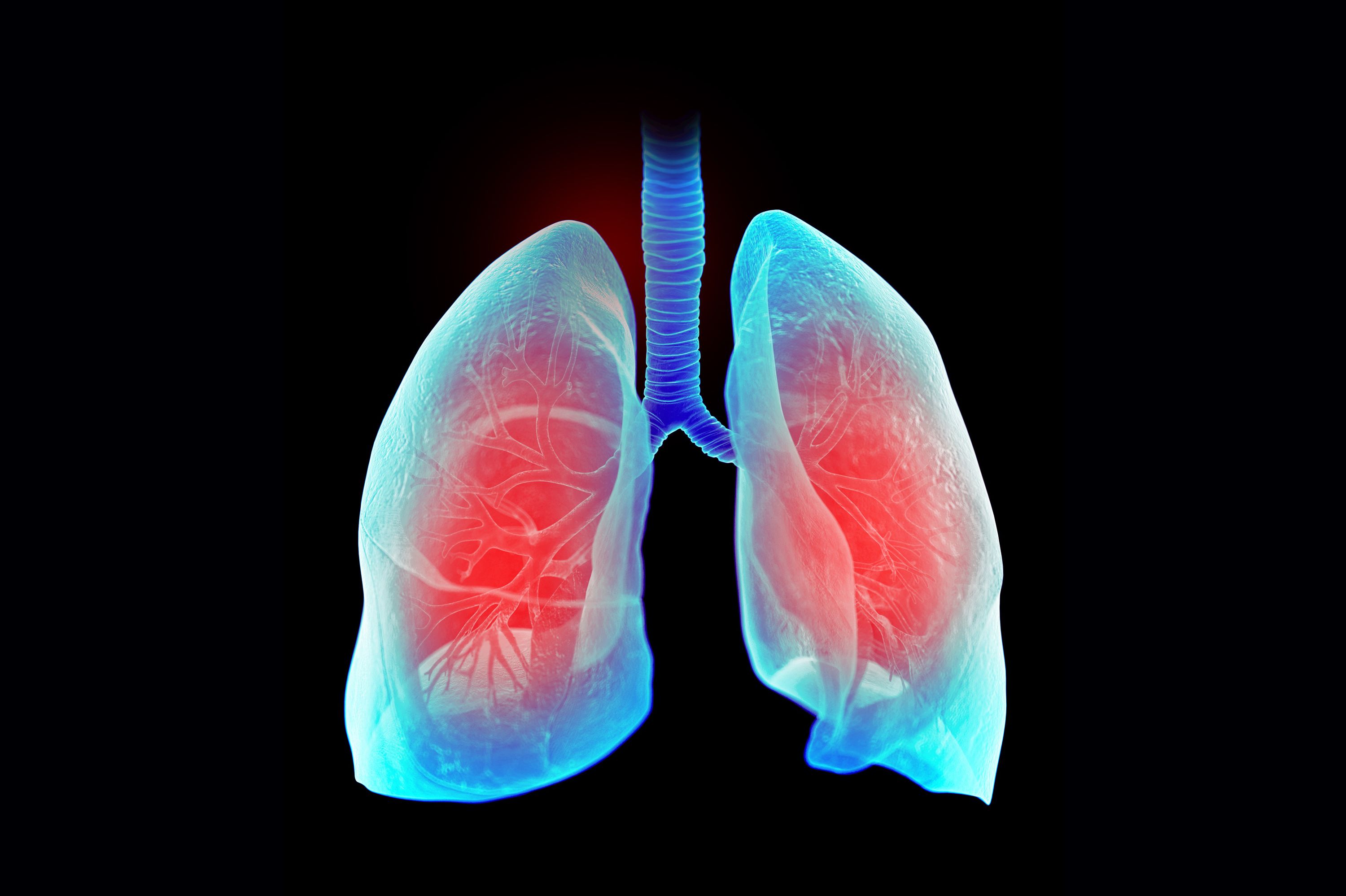

Featured
What Effect Does Lung Capacity Have On Athletic Performance?
Modified: January 2, 2024
Improve your athletic performance with increased lung capacity. Discover the impact of lung capacity on featured sports and fitness activities.
Introduction
Welcome to our in-depth exploration of the fascinating connection between lung capacity and athletic performance. As athletes, we often focus on endurance, strength, and speed as the key factors in our training and performance. But what about our lung capacity?
Although it may not be as glamorous or widely discussed as other aspects of fitness, lung capacity plays a crucial role in determining athletic prowess. It is the key factor that determines how efficiently we can take in oxygen and remove carbon dioxide during physical activity.
Lung capacity refers to the maximum amount of air that our lungs can hold. It is measured in liters and varies from person to person based on factors such as age, gender, and overall physical fitness. Athletes with larger lung capacity have a distinct advantage, as their lungs can take in more oxygen with each breath, supplying their muscles with the fuel they need to perform at their best.
In this article, we will delve into the effects of lung capacity on athletic performance, examining how it impacts cardiovascular endurance, anaerobic performance, and oxygen uptake efficiency. We will also explore the factors that can affect lung capacity in athletes and provide some training techniques to improve it.
By understanding the significance of lung capacity in athletic performance and implementing strategies to enhance it, athletes can maximize their potential and reach new heights in their respective sports.
Background on Lung Capacity
In order to understand the importance of lung capacity in athletic performance, it is essential to have a basic understanding of how the respiratory system works and how lung capacity is measured.
The respiratory system is responsible for the exchange of oxygen and carbon dioxide in the body. It consists of several organs, including the nose, mouth, trachea, bronchi, and lungs. When we inhale, air enters our body through the nose or mouth, passes through the trachea, and then into the bronchi, which branch off into smaller airways called bronchioles. The bronchioles lead to the alveoli, tiny air sacs within the lungs where the exchange of gases takes place.
Lung capacity refers to the total amount of air that our lungs can hold. It is measured using a device called a spirometer, which records the volume of air inhaled and exhaled. The two main lung capacity measurements are total lung capacity (TLC) and vital capacity (VC).
Total lung capacity is the maximum amount of air that the lungs can hold, including the air that remains even after a forceful exhalation. It is made up of several components, including tidal volume (the amount of air inhaled and exhaled during normal breathing), inspiratory reserve volume (the amount of air that can be forcefully inhaled after a normal inhalation), and expiratory reserve volume (the amount of air that can be forcefully exhaled after a normal exhalation).
Vital capacity, on the other hand, is the maximum amount of air that can be exhaled forcefully after a maximum inhalation. It represents the total amount of air that can be moved in and out of the lungs and is considered a more accurate measure of lung function.
It is important to note that lung capacity can vary among individuals and is influenced by various factors such as age, gender, height, and overall health. Additionally, regular exercise and physical training can lead to an increase in lung capacity, as the respiratory muscles become stronger and more efficient.
With this background knowledge on lung capacity, we can now explore how it impacts athletic performance in greater detail.
The Importance of Lung Capacity in Athletic Performance
Lung capacity plays a crucial role in athletic performance, regardless of the sport or activity. It directly affects an athlete’s ability to sustain physical exertion, recover quickly, and perform at their best. Here are some key reasons why lung capacity is important for athletes:
1. Oxygen Supply: During exercise, our muscles require oxygen to produce the energy needed for movement. The larger our lung capacity, the more oxygen we can inhale with each breath. This means that athletes with greater lung capacity have a higher oxygen supply, allowing their muscles to work efficiently and delay the onset of fatigue.
2. Energy Efficiency: Oxygen is essential for the process of aerobic metabolism, where carbohydrates and fats are broken down to produce energy. Athletes with higher lung capacity have a greater oxygen uptake efficiency, meaning they can generate energy more efficiently and sustain physical activity for longer periods of time.
3. Carbon Dioxide Removal: As we exercise, our muscles produce carbon dioxide as a byproduct. Adequate lung capacity is crucial for efficiently removing carbon dioxide from the body. Athletes with greater lung capacity can expel carbon dioxide more effectively, preventing the build-up of waste products and enhancing performance.
4. Endurance: Endurance is a key component of many sports, requiring athletes to perform at a high intensity for an extended period of time. Lung capacity plays a vital role in endurance performance, as it directly impacts the delivery of oxygen to the muscles and the removal of waste products. Athletes with larger lung capacity can sustain high-intensity efforts for longer durations, giving them a competitive edge.
5. Recovery: After intense physical activity, athletes need efficient recovery to repair muscle damage and replenish energy stores. Lung capacity plays a role in this process by ensuring an adequate oxygen supply to support the recovery process. Athletes with greater lung capacity can recover more quickly, allowing them to get back to training and competing sooner.
6. Performance at Altitude: For athletes training or competing at high altitudes, where oxygen levels are lower, lung capacity becomes even more critical. Athletes with larger lung capacity have an advantage in these environments, as they are able to compensate for the decreased oxygen availability and maintain performance levels.
Overall, lung capacity is a fundamental element of athletic performance. It directly impacts an athlete’s endurance, energy efficiency, and ability to sustain physical exertion. By recognizing the importance of lung capacity and working to improve it, athletes can enhance their overall performance and achieve their full potential in their chosen sports.
Effects of Lung Capacity on Cardiovascular Endurance
Cardiovascular endurance refers to the ability of the cardiovascular system to deliver oxygen-rich blood to the muscles and remove waste products during prolonged physical activity. Lung capacity plays a significant role in cardiovascular endurance and can have several effects on an athlete’s performance:
1. Oxygen Delivery: Increasing lung capacity allows for a greater volume of oxygen to be inhaled with each breath. This means that more oxygen can be delivered to the muscles, enhancing their ability to generate energy through aerobic metabolism. Athletes with larger lung capacity have higher oxygen-carrying capacity, enabling them to sustain physical activity for longer periods of time without experiencing excessive fatigue.
2. Delayed Fatigue: Improved lung capacity can delay the onset of fatigue during endurance activities. The increased oxygen supply to the muscles allows them to continue working efficiently, delaying the point at which lactic acid builds up and leads to muscle fatigue. This delay in fatigue can lead to improved performance and the ability to sustain high-intensity efforts for extended periods.
3. Recovery: Efficient lung capacity aids in the recovery process after intense exercise. Following a workout, the body needs to replenish oxygen levels, remove waste products (such as carbon dioxide), and repair damaged tissues. Athletes with larger lung capacity can breathe in more oxygen, helping to speed up the recovery process and reduce the time needed to fully recover.
4. Enhanced Endurance Training: Engaging in endurance training can further improve lung capacity. Consistently challenging the respiratory system through activities such as running, cycling, or swimming can stimulate adaptations in lung tissue, increasing its capacity to take in and utilize oxygen. This, in turn, enhances cardiovascular endurance and allows athletes to perform at higher intensities for longer durations.
5. Increased Tolerance for High-Altitude Training: Training or competing at high altitudes, where oxygen levels are lower, can be challenging for athletes. However, those with larger lung capacity can compensate for the reduced oxygen availability more effectively. Having greater lung capacity enables athletes to adapt better to the oxygen-depleted environment, improving their overall cardiovascular endurance and performance at high altitudes.
By focusing on increasing lung capacity, athletes can experience significant improvements in their cardiovascular endurance. Alongside specific endurance training, exercises that target the respiratory system, such as interval training or long, sustained runs, can help enhance lung capacity and improve an athlete’s ability to sustain physical activity for extended periods of time.
Effects of Lung Capacity on Anaerobic Performance
While lung capacity is commonly associated with aerobic activities, it also has significant effects on anaerobic performance. Anaerobic exercise involves short bursts of high-intensity activity, such as sprinting, weightlifting, or explosive movements. Even though these activities rely less on oxygen utilization, lung capacity still plays a role in an athlete’s anaerobic performance. Here are some key effects:
1. Efficient Recovery: Adequate lung capacity helps facilitate the efficient removal of carbon dioxide, a waste product generated during anaerobic exercise. By effectively getting rid of carbon dioxide, the body can maintain a more stable pH level and prevent the onset of fatigue. Athletes with larger lung capacity can recover more quickly between bursts of intense activity, allowing them to sustain their performance during anaerobic workouts.
2. Short Rest Intervals: Anaerobic activities often involve short rest intervals between intense bouts of exercise. Athletes with higher lung capacity are better equipped to replenish oxygen stores during these brief breaks. This allows them to recover faster and perform at a higher intensity during subsequent bouts, resulting in improved anaerobic performance.
3. Increased Power Output: Anaerobic exercises require muscular power and explosiveness. Lung capacity plays a role in maximizing power output by ensuring a constant supply of oxygen to the working muscles. Athletes with larger lung capacity can take in more oxygen with each breath, allowing their muscles to generate more force and power during explosive movements.
4. Enhanced Sprinting Abilities: Short, intense sprints rely on the body’s ability to rapidly deliver oxygen to the muscles. Athletes with greater lung capacity have a higher oxygen-carrying capacity, enabling them to sustain high-intensity efforts during sprinting. This translates to improved sprinting abilities and the ability to maintain power throughout the duration of a sprint.
5. Mental Endurance: Anaerobic exercises can be mentally challenging due to the intensity and discomfort they often entail. Having well-developed lung capacity can improve an athlete’s mental endurance and ability to push through the physical and mental barriers that accompany anaerobic training. The increased oxygen supply provided by larger lung capacity can support mental focus and clarity, enabling athletes to maintain their intensity and performance levels.
While anaerobic activities rely less on oxygen compared to aerobic exercises, lung capacity still plays a significant role in an athlete’s anaerobic performance. By focusing on enhancing lung capacity through specific training techniques and exercises, athletes can see improvements in their power output, recovery abilities, and overall performance in anaerobic activities.
Effects of Lung Capacity on Oxygen Uptake Efficiency
Lung capacity has a direct impact on an athlete’s oxygen uptake efficiency, which refers to the ability of the body to effectively extract and utilize oxygen from the air. This efficiency is crucial for maximizing athletic performance, especially during aerobic activities. Here are some key effects of lung capacity on oxygen uptake efficiency:
1. Increased Oxygen Intake: Athletes with larger lung capacity can take in a greater volume of air with each breath. This means they have the potential to inhale more oxygen, providing a higher oxygen supply to the bloodstream. An increased oxygen intake allows the body to deliver oxygen to the working muscles more efficiently, improving overall oxygen uptake efficiency.
2. Enhanced Oxygen Diffusion: Lung capacity affects the exchange of gases in the alveoli of the lungs. With larger lung capacity, there is a larger surface area available for oxygen to diffuse into the bloodstream. This allows for a greater transfer of oxygen from the lungs to the blood, improving oxygen uptake efficiency and maximizing the oxygen available to the muscles.
3. Optimal Oxygen Saturation: Adequate lung capacity ensures optimal oxygen saturation in the bloodstream. Oxygen saturation refers to the percentage of hemoglobin molecules that are carrying oxygen. Higher lung capacity leads to a more efficient oxygen saturation process, increasing the oxygen-carrying capacity of the blood and supporting optimal oxygen uptake efficiency during physical activity.
4. Efficient Gas Exchange: Efficient gas exchange is crucial for oxygen uptake efficiency. With larger lung capacity, there is an increased surface area available for gas exchange in the alveoli. This allows for a more efficient removal of carbon dioxide, a waste product produced during aerobic metabolism, and the simultaneous intake of oxygen. Efficient gas exchange facilitates a higher oxygen uptake efficiency, enabling athletes to perform at a higher level for a longer duration.
5. Improved Oxygen Utilization: Lung capacity directly affects the availability of oxygen to be utilized by the muscles. Athletes with larger lung capacity can deliver a greater amount of oxygen to the working muscles per unit of time. This results in enhanced oxygen utilization, allowing the muscles to generate energy more efficiently and sustain aerobic activity for longer durations.
By improving lung capacity through targeted training techniques and exercises, athletes can enhance their oxygen uptake efficiency. This leads to improved endurance, better utilization of oxygen during physical activity, and ultimately, enhanced athletic performance.
Factors Affecting Lung Capacity in Athletes
Lung capacity can be influenced by various factors, both intrinsic and extrinsic, that can have an impact on an athlete’s respiratory function and performance. Understanding these factors can help athletes optimize their lung capacity and improve overall athletic abilities. Here are some key factors that can affect lung capacity in athletes:
1. Genetics: Genetics play a significant role in determining an individual’s lung capacity. Some people naturally possess a higher lung capacity due to genetic factors, while others may have a smaller lung capacity. However, it is important to note that genetic potential can be influenced and improved through proper training and conditioning.
2. Physical Fitness Levels: Physical fitness levels have a direct influence on lung capacity. Regular exercise and physical training can lead to improvements in lung capacity by strengthening the respiratory muscles and improving overall lung function. Engaging in cardiovascular exercises such as running, swimming, or cycling can specifically target and enhance lung capacity.
3. Age: Lung capacity tends to peak in early adulthood and gradually declines with age. As athletes get older, their lung capacity may decrease slightly. Nevertheless, regular exercise and proper training can help preserve lung capacity and minimize the decline associated with aging.
4. Gender: On average, men tend to have larger lung capacities than women. This is primarily because men typically have larger lung volumes and greater lung surface areas. However, it is important to note that individual variations exist, and dedicated training can help women optimize their lung capacity and improve respiratory function.
5. Altitude: Training or competing at high altitudes can have a significant impact on lung capacity. High altitudes have lower oxygen levels, and the body needs to adjust to the reduced oxygen availability. Over time, the respiratory system can adapt to the lower oxygen levels, resulting in increased lung capacity to maximize oxygen intake in these environments.
6. Breathing Technique: The way athletes breathe during exercise can also impact lung capacity. Proper breathing techniques, such as diaphragmatic breathing or belly breathing, allow for more efficient use of the respiratory muscles and can enhance lung capacity. It is important for athletes to pay attention to their breathing patterns and ensure they are taking deep, full breaths to optimize lung function.
7. Smoking and Environmental Factors: Smoking can significantly impair lung capacity and function by causing damage to the lung tissue. Exposure to certain environmental factors, such as pollution or secondhand smoke, can also have a negative impact on lung health. It is important for athletes to maintain a smoke-free environment and avoid pollutant-filled areas to preserve and optimize their lung capacity.
By understanding the factors that can affect lung capacity, athletes can take steps to optimize their respiratory function. Through targeted training, proper breathing techniques, and a healthy lifestyle, athletes can improve their lung capacity and enhance their overall athletic performance.
Training Techniques to Improve Lung Capacity
Improving lung capacity can have a significant impact on an athlete’s performance and endurance. While genetics play a role in determining lung capacity, specific training techniques can help athletes maximize their respiratory potential. Here are some effective training techniques to improve lung capacity:
1. Aerobic Exercise: Engaging in regular aerobic exercise, such as running, cycling, or swimming, can strengthen the respiratory muscles and increase lung capacity. These activities require sustained effort and deep breathing, forcing the lungs to work harder and adapt to higher oxygen demands.
2. Interval Training: Interval training involves alternating between periods of high-intensity exercise and recovery. This training method can be beneficial for improving lung capacity by challenging the respiratory system. During the intense phases, the lungs have to work harder to supply oxygen to the muscles, leading to adaptations that enhance lung capacity over time.
3. High-Altitude Training: Training at high altitudes with lower oxygen levels can stimulate adaptations in the body, including increased lung capacity. High-altitude training forces the respiratory system to work harder to deliver sufficient oxygen to the muscles. This exposure can trigger physiological changes in the body, resulting in improved lung capacity even at sea-level environments.
4. Diaphragmatic Breathing: Diaphragmatic breathing, also known as belly breathing, involves deep inhalations that engage the diaphragm, the primary breathing muscle. This technique helps individuals fully expand their lungs and improve their lung capacity. Training sessions focused on diaphragmatic breathing can strengthen the diaphragm muscle and promote deeper and more efficient breathing patterns.
5. Strength Training: Incorporating strength training exercises can indirectly improve lung capacity. Strengthening the muscles surrounding the lungs, such as the intercostal muscles and the diaphragm, can enhance their function and increase lung capacity. Exercises like dumbbell flyes, cable pull-downs, or plank variations can target these muscles and contribute to improved lung capacity.
6. Breathing Exercises: Various breathing exercises can specifically target and improve lung capacity. Examples include pursed lip breathing, where exhalations are lengthened, and box breathing, which involves inhaling, holding the breath, exhaling, and holding again in equal intervals. These exercises help strengthen the respiratory muscles and enhance lung capacity over time.
7. Yoga and Pilates: Practices such as yoga and Pilates emphasize deep breathing techniques and can be beneficial for improving lung capacity. These activities promote mindful breathing, full inhalations, and proper use of the respiratory muscles. Regular participation in yoga or Pilates classes can aid in increasing lung capacity and improving overall respiratory function.
It’s important for athletes to gradually incorporate these training techniques into their routine, allowing the respiratory system to adapt and improve over time. Consistency is key in promoting long-term changes in lung capacity. By incorporating these techniques into their training regimen, athletes can optimize their lung capacity, enhance their performance, and reach new levels of athletic achievement.
Conclusion
Lung capacity is a crucial factor in athletic performance across various sports and activities. It directly influences an athlete’s cardiovascular endurance, anaerobic performance, and oxygen uptake efficiency. Understanding the effects of lung capacity and implementing strategies to improve it can significantly enhance an athlete’s overall abilities and unlock their full potential.
Through targeted training techniques, athletes can strengthen their respiratory muscles, increase lung capacity, and optimize their oxygen uptake efficiency. Aerobic exercise, interval training, and high-altitude training challenge the respiratory system and promote adaptations that improve lung capacity. Incorporating diaphragmatic breathing, strength training, and specific breathing exercises can also enhance lung capacity and respiratory function.
Awareness of the factors that can affect lung capacity, such as genetics, physical fitness levels, age, and environmental factors, allows athletes to understand their own respiratory potential and take appropriate steps to optimize it. By maintaining a healthy lifestyle, avoiding smoking and pollutant-filled environments, and implementing proper breathing techniques, athletes can preserve and improve their lung capacity.
Optimizing lung capacity leads to numerous benefits for athletes. It increases oxygen intake, delays fatigue, supports efficient recovery, enhances endurance, and improves overall performance. Athletes with larger lung capacity can sustain higher intensity efforts for longer durations, recover more quickly, and utilize oxygen more efficiently.
While lung capacity is influenced by factors such as genetics and age, athletes have the ability to improve and maximize their respiratory potential through dedicated training and conditioning. By understanding the importance of lung capacity, implementing targeted training techniques, and focusing on the efficient use of respiratory muscles, athletes can unlock their full athletic potential and raise the bar for their performance.

